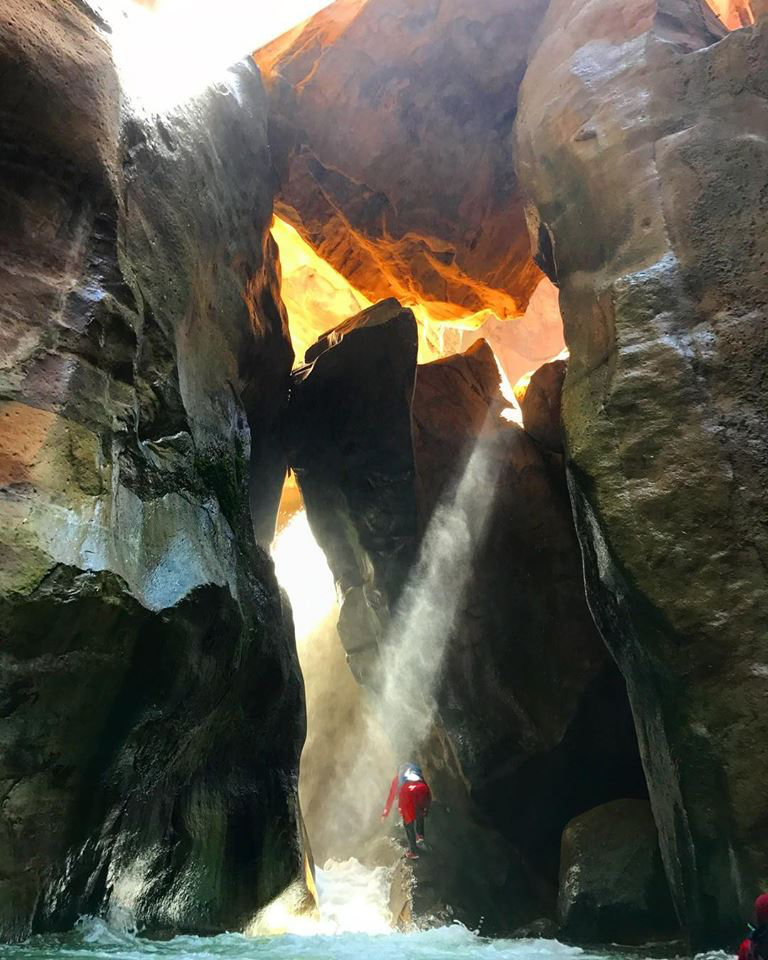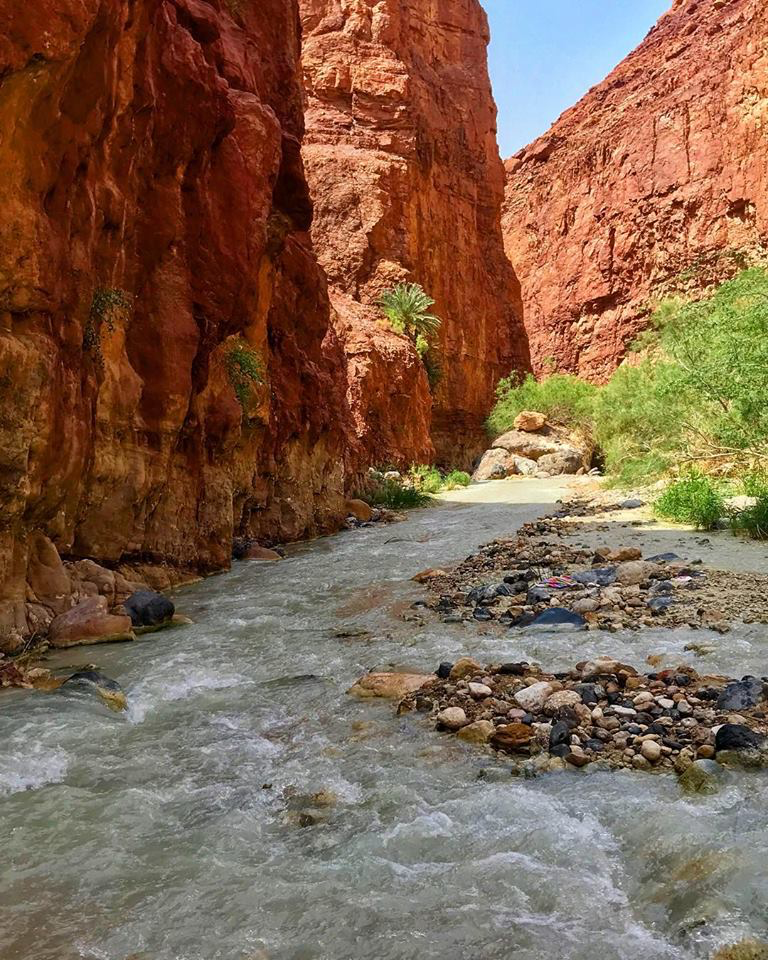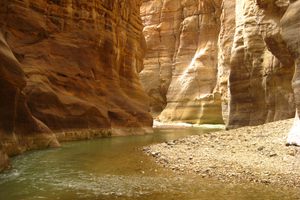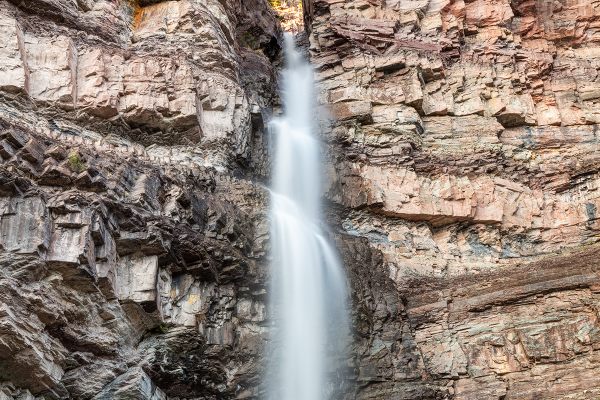About
Though water may not be what comes to mind at the mention of Jordan, the country is actually full of breathtaking water-filled slot canyons ("widyan" in Arabic) that make for incredible hiking, climbing, rappelling, and even fishing. The water originates in the west, bubbling forth from hot springs or from the increasingly rare melted winter snow, and rushes down towards the Dead Sea, the lowest point on Earth.
Slowly yet unrelentingly, this water has chiseled through the rock. After millions of years, it has unveiled a stunning layer-cake alternation of burnt orange, tan, dusty pink, and beige-colored stone in places like Wadi Mujib; granite boulders and fire-colored walls in Wadi Zarqa Ma'in; and plainer, chalky sandstone walls in widyan such as Wadi Himara.
In the winter and early spring, these canyons overflow with water, and it's too dangerous to hike them. Come summer and fall, the water slows and they provide an unforgettable adventure and an opportunity to see wildlife found nowhere else in the country. If you examine the mossy crevices of the canyon walls, it's entirely possible that you will see a freshwater crab clinging to the vegetation. Peer into the calmer parts of the water's flow, and you might see fish flitting about, searching for a crunchy insect snack. At higher elevations closer to the sources of the widyan, mountain cats, ibex, and over 300 species of plants rely on the life-giving waters to invigorate what would otherwise be a sandy, rocky landscape.
Indeed, the fertility of the land made possible by the moisture of even the drier widyan—in which the water never reaches more than a steady stream—provides sustenance to humans and wild animals alike. While less common than in previous decades, Bedouin still go to the widyan to hunt land animals, birds, and small fish. Hikers occasionally find small bullet casings on the ground, or see hunters and their children grilling the tiny birds or fish that they have caught.
These lush canyons were as important to locals in the past as they are today. Some of them have even merited mention in ancient texts like the Bible. For instance, scholars have determined with reasonable certainty that Wadi Mujib is synonymous with what is referred to in the Old Testament as the River Arnon.
If you push through to the end of the widyan trails, you’ll often be rewarded by a stunning waterfall. Wadi Mujib's Siq Trail is probably the most famous example of this, but Wadi Hidan, Wadi Balou', and Wadi Zarqa Ma'in are a few more of the many canyons dotted with stunning waterfalls. Timing is everything, and on a clear day, these areas prove that Mother Nature's handiwork is on par with the manmade treasures of Petra and Jerash. In the sunlight, the mist that sprays up from the falls' contact with the pool below looks like aerated diamond dust. It's more than enough to make you forget that you're in a country that is mostly desert.
Related Tags
Know Before You Go
The map coordinates above point to Wadi Mujib, Jordan's most well-known river canyon. There are many organized hikes through the canyons including the popular Siq Trail through Wadi Mujib. While exploring the widyan, take all necessary precautions—aside from Mujib and Hidan, most are not national or private, and thus lacking in safety infrastructure. Never go after a strong rain (avoid winters and early springs). Be sure to pack plenty of water, snacks, good shoes, and, if you're a weaker swimmer, a lifejacket for deeper widyan. It's always better to go with a guide, if possible.
Ancient Ruins & Legendary Landmarks of Jordan
Explore Mesmerizing Jordan: From Petra to Greco-Roman Ruins.
Book NowPublished
March 7, 2019
Sources
- http://www.unesco.org/new/en/natural-sciences/environment/ecological-sciences/biosphere-reserves/arab-states/jordan/mujib/
- https://www.welcometojordan.info/wadi-mujib
- http://www.rscn.org.jo/content/mujib-biosphere-reserve-1
- http://www.wildjordan.com/eco-tourism-section/canyoning
- http://www.rscn.org.jo/content/adventure-beckons-mujib-reserve
- http://jjbs.hu.edu.jo/files/v7n3/Paper%20Number%205_m.pdf
- http://jjbs.hu.edu.jo/files/v7n3/Paper%20Number%205_m.pdf











































